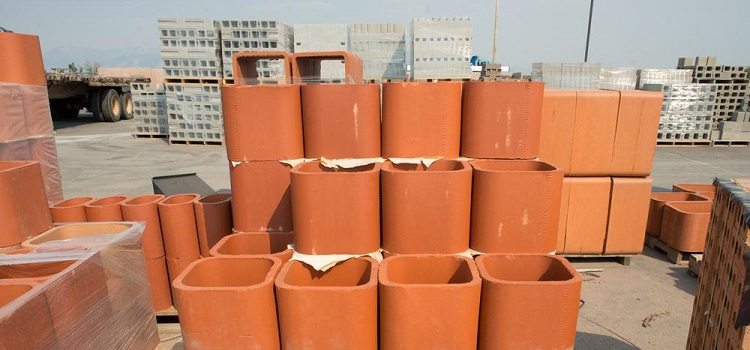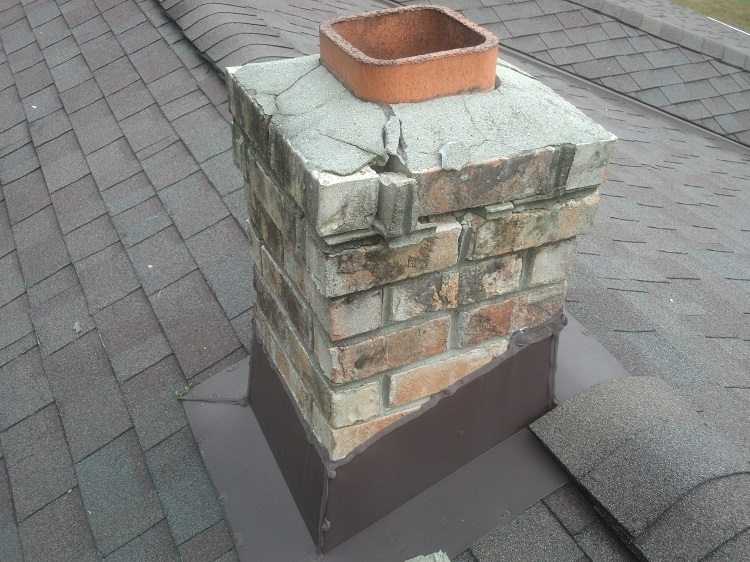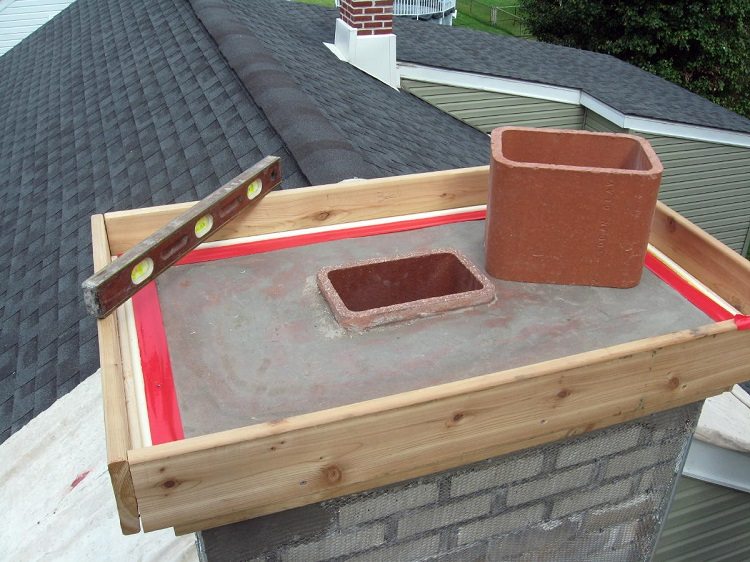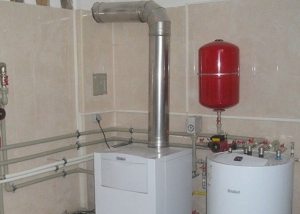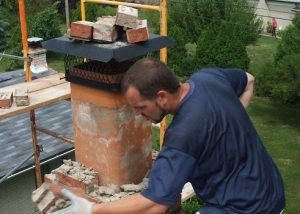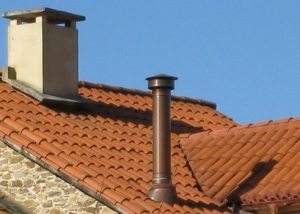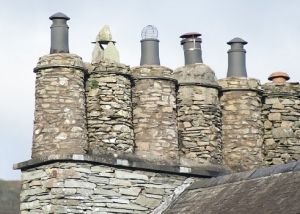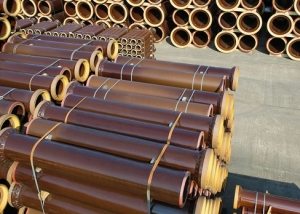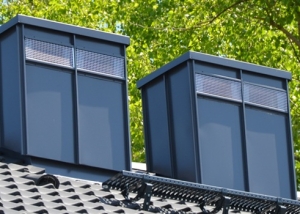Chimneys are an important part of a heating boiler, stove, fireplace, therefore very high demands are made on them. Modern chimneys are made from different materials. One of the safest and most effective design decisions may be the choice ceramic pipe. Such a chimney is characterized by high operational parameters, easy to install, maintain.
Content
Characteristics of ceramic pipes
Ceramic chimneys are quite fragile and require support. They also have high thermal conductivity, which leads to the need for thermal insulation. Pipes are made of circular cross section with a length of 30 cm to one meter. On the outside, minor defects and roughness are permissible, which should not affect the integrity of the section.
The connection of ceramic pipes is carried out using a lock. For this, one edge of the channel is thinned along the outer diameter, and the other is expanded along the inner. This way provides a snug fit sections to each other.
Note! Especially important is the alignment along the central axis, so the type of lock is crucial for chimneys made of ceramics.
The material is characterized by a wide temperature range - from 350 to 1400 ºС, sound insulation, heat storage, vibration resistance.
The advantages of a ceramic chimney over a brick
Ceramic chimneys have many advantages over brick counterparts. They are distinguished by good traction, which is possible due to the coating of the inner surface with heat-resistant glaze. If the system is equipped with such a pipe, then when lighting it does not raise any questions related to the smoke of the house.
Since the glaze has low water permeability, the chimney is not prone to absorb water. Condensation and moisture from precipitation are able to drain into a special sump. In a brick pipe, this is hindered by the porosity of the surface. It absorbs moisture, which freezes at low temperatures, thereby destroying the masonry and mortar.
Ceramic chimneys are resistant to soot formation. Even if it settles on the inner part of the channel, the problem is solved by purification by chemical or mechanical methods. Fire safety is explained by the heat resistance (heat resistance) of the ceramic pipe, as well as the low thermal conductivity of the outer walls, which almost do not heat up.
Smoke contains nitrogen and sulfur compounds. When interacting with water (precipitation, condensate), acids are formed that can destroy both metal and brick channels. Ceramic chimneys are characterized by resistance to aggressive substances of a chemical nature.
An important advantage is the ease of installation, although the pipe is quite heavy. However, ceramics are easy to cut, process, grind, and drill. Such a chimney will last 30-40 years.
The device of the chimney type "sandwich"
The chimney is usually installed in a duct made of concrete, ceramic or other blocks.
The gap between them is filled with a mineral-based insulation. Such a multi-layer construction is called a “sandwich”. At the same time, several important tasks are immediately solved:
- thermal insulation;
- Fire safety;
- appearance.
The thermal insulation of the sandwich pipe significantly reduces the formation of condensate, since the temperature difference between the surfaces outside and inside is reduced. This leads to improved traction, reduced soot and acid formation. The lack of heating of the chimney to dangerous temperature values is important when the pipe passes through the roof and closes the house.
Chimney requirements
Visually, the chimney can be divided into the base of the chimney, inspection and cleaning tee, condensate tank, tee for connecting a boiler or furnace.
Note! The total height of the chimney “sandwich” should be at least five meters. The higher it is, the stronger the thrust.
Important requirements that apply to a ceramic chimney:
- elevation of 1 m 20 cm above a flat roof;
- not lower than the level of the ridge;
- not less than 50 cm above the ridge or parapet;
- not lower than a straight line from the level of the ridge at an angle of 10 degrees to the horizon.
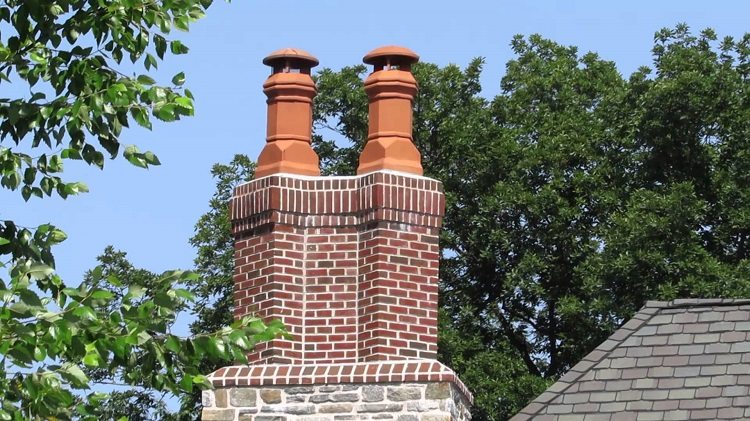
The height of the pipe depends on the material of the roof, if it is flammable, then the chimney should rise no less than 1 meter from the coating
The size of the ceramic channel cannot be less than the diameter of the flue pipe of the boiler, furnace. If the roof of the house is made of combustible material, then the ceramic pipe should rise from one to one and a half meters above the ridge.
Features of installation work
The fundamental points when installing a ceramic chimney are:
- reliable and solid foundation;
- installation direction from bottom to top;
- joints of pipes and blocks should not occur in ceilings or roofing;
- strict vertical structure.
It is also necessary to consider the possible shrinkage of the structure during operation. To do this, in the aisles of the roof and ceilings, a supply of space should be provided and not use a rigid ligament. When assembling, it is important to check each element for the absence of significant defects or cracks in the inner surface. Sealing them is ineffective in any way and is temporary.
To install the chimney requires a separate foundation, which is not connected with the foundation of the building. The exception is the presence of a single monolithic foundation.
The extension of the inner pipe occurs by composing the sections with locks, followed by sealing the joint with a heat-resistant sealant. Chimneys “sandwich” involve the installation of expanded clay blocks, which are laid with a solution with reinforcement reinforcement.
Manufacturers offer a wide selection of elements for assembling a chimney with any configuration. A pre-designed scheme will help to acquire a complete set of required design details.
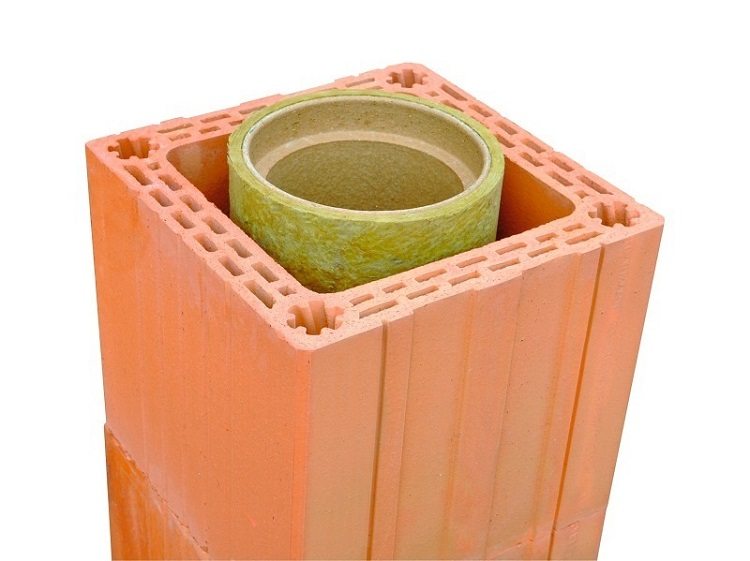
From a ceramic pipe you can build a chimney of the "sandwich" type, for it still need insulation and outdoor units
Stages of installation of the chimney "sandwich"
Installation of a chimney of the "sandwich" type is carried out sequentially and in stages. First, the foundation is prepared on which the canal will be built. It must be strictly flat and horizontal. Next, cement mortar is applied to the base and a module is installed with a tap for connecting a boiler, fireplace or stove.
To process the joints, it is necessary to prepare a solution having acid-resistant characteristics. It is usually available in powder form. Its mixing is best performed at an air temperature of at least +20 ºС and applied within one and a half hours.
Note! It is strictly forbidden to add water to the prepared mixture.
At the next stage, a tee is installed with a pipe for inspection and cleaning of the chimney, and the joint is smeared with the prepared solution. Next, direct structural elements are assembled, the joints are aligned with a damp sponge to remove excess solution.
Overview of major manufacturers
Undoubtedly, the durability, performance and functionality of the installed chimney system depends on the quality of installation and materials. Among the famous brands, I releasechimneys made of ceramics, we can note Schiedel, Effe2, Tona, Baxi, Icopal, Volcano. The first brand is considered the most famous.
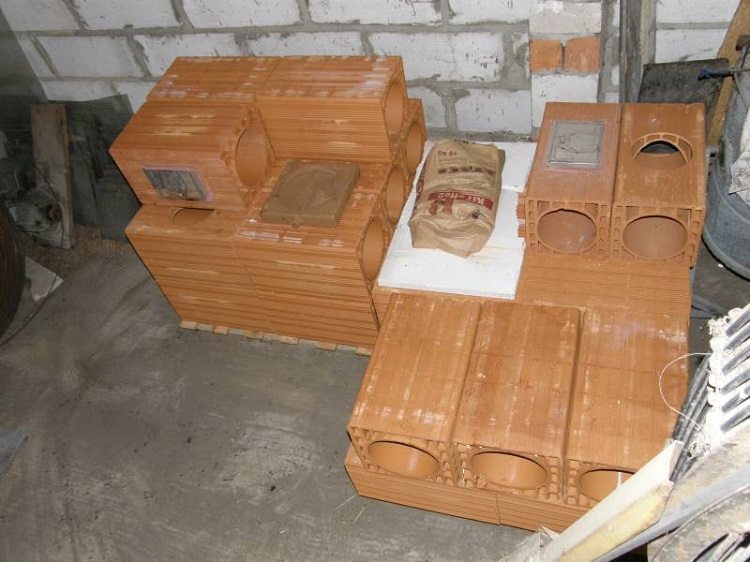
An ideal option would be to purchase all the necessary elements of the chimney system and building mixtures for its installation by one manufacturer
Schiedel products are relatively inexpensive, compact, easy to use and suitable for various stoves for the home and bath. Such ceramic chimneys can work with equipment that uses any type of fuel. The basis of the design is able to withstand heating up to 1 thousand 200 degrees.
The German company Tona produces products from expensive grades of clay. This allows you to get the most uniform and hygroscopic structure of the pipes. The individual parts are connected by couplings with a vertical joint. This method improves the reliability of the design and the integrity of the system. Diameters of models vary from 8 to 30 cm, length - 1 meter. Possible upper and lower connection of the chimney to the equipment.
The range of the Italian company Effe2 is represented by 3 modifications of Domus (for solid fuel stoves), Ultra and Duplex - for boilers for liquid fuel. In chimneys of the Polish manufacturer Icopal, stabilization and ventilation of ceramic channels is provided, and the outdoor units are made by vibropressing from crushed concrete.
Vulcan chimneys withstand temperatures up to 600 degrees. For insulation, a special cotton wool is used with a layer of up to 10 cm, capable of withstanding 750 ºС. The design also provides a thermal compensation system.
Sandwich chimneys with a ceramic pipe inside are an excellent option for installing a chimney duct. Their characteristics are in many ways superior to the similar parameters of brick counterparts and make it possible to obtain a high-quality and durable system for removing combustion products.
